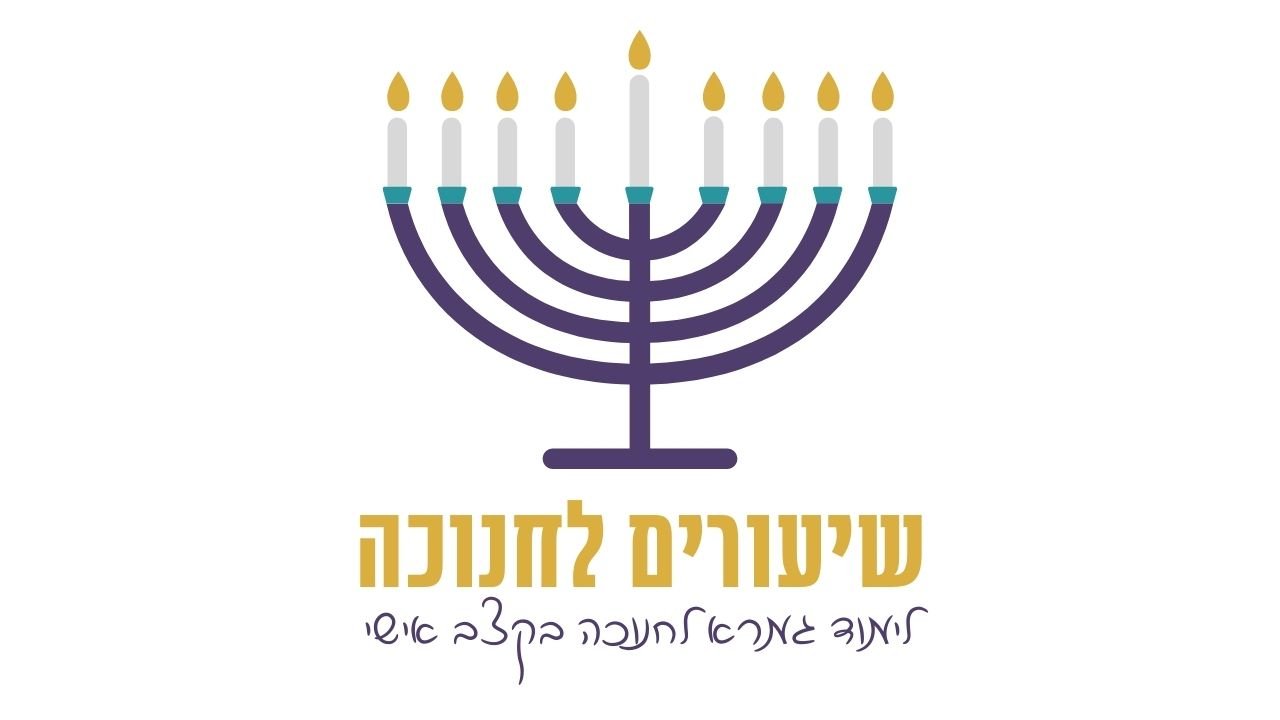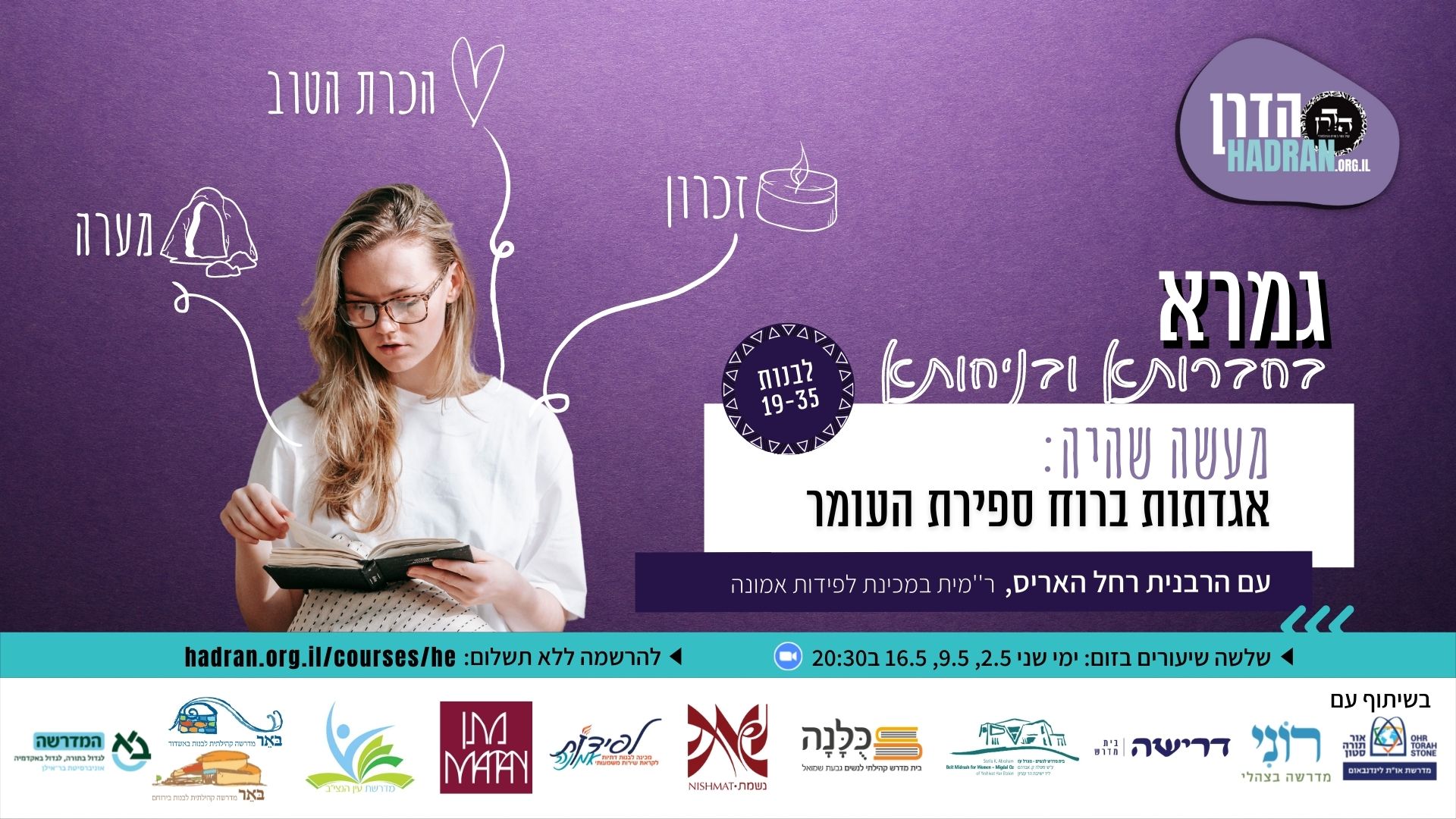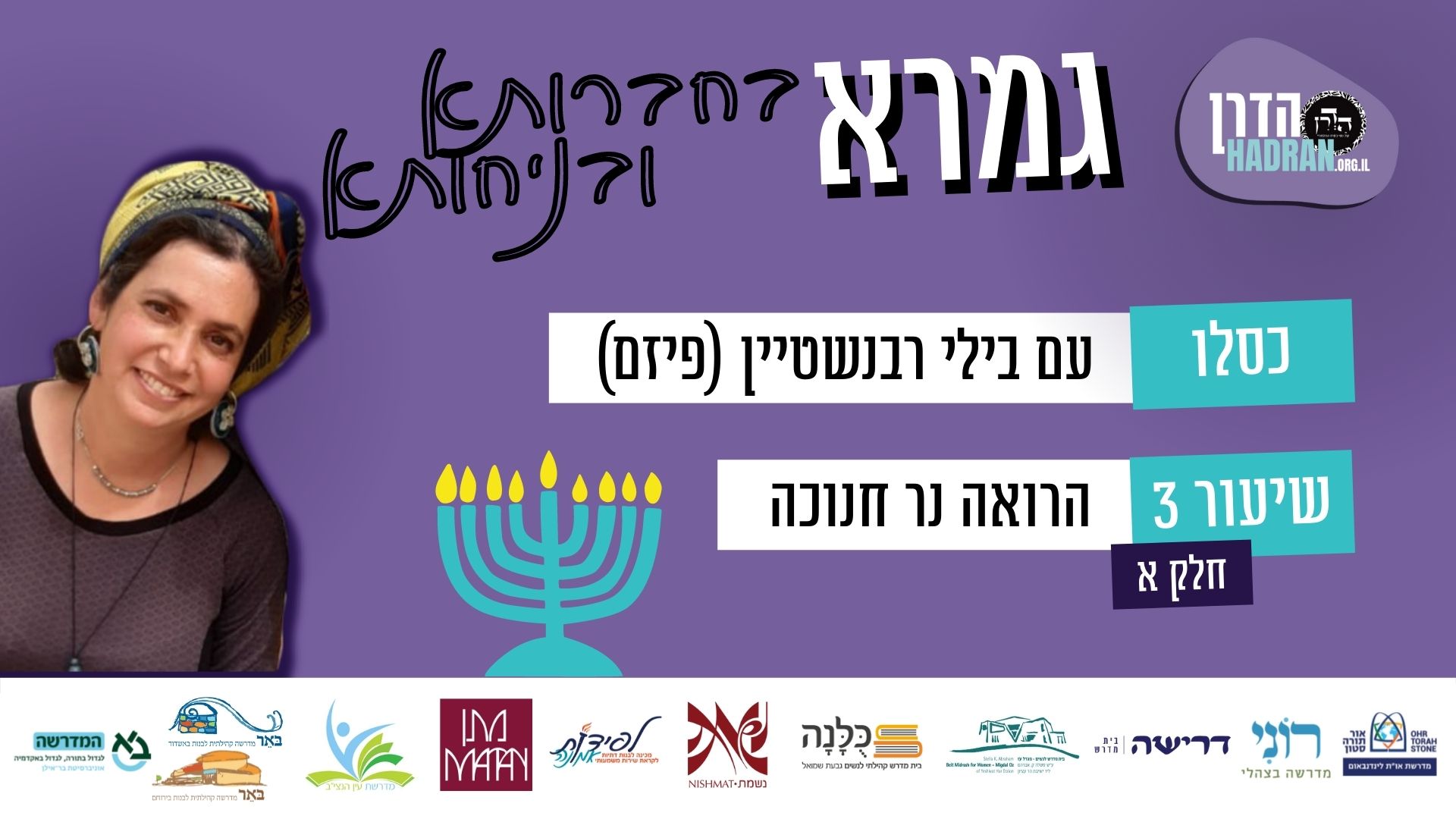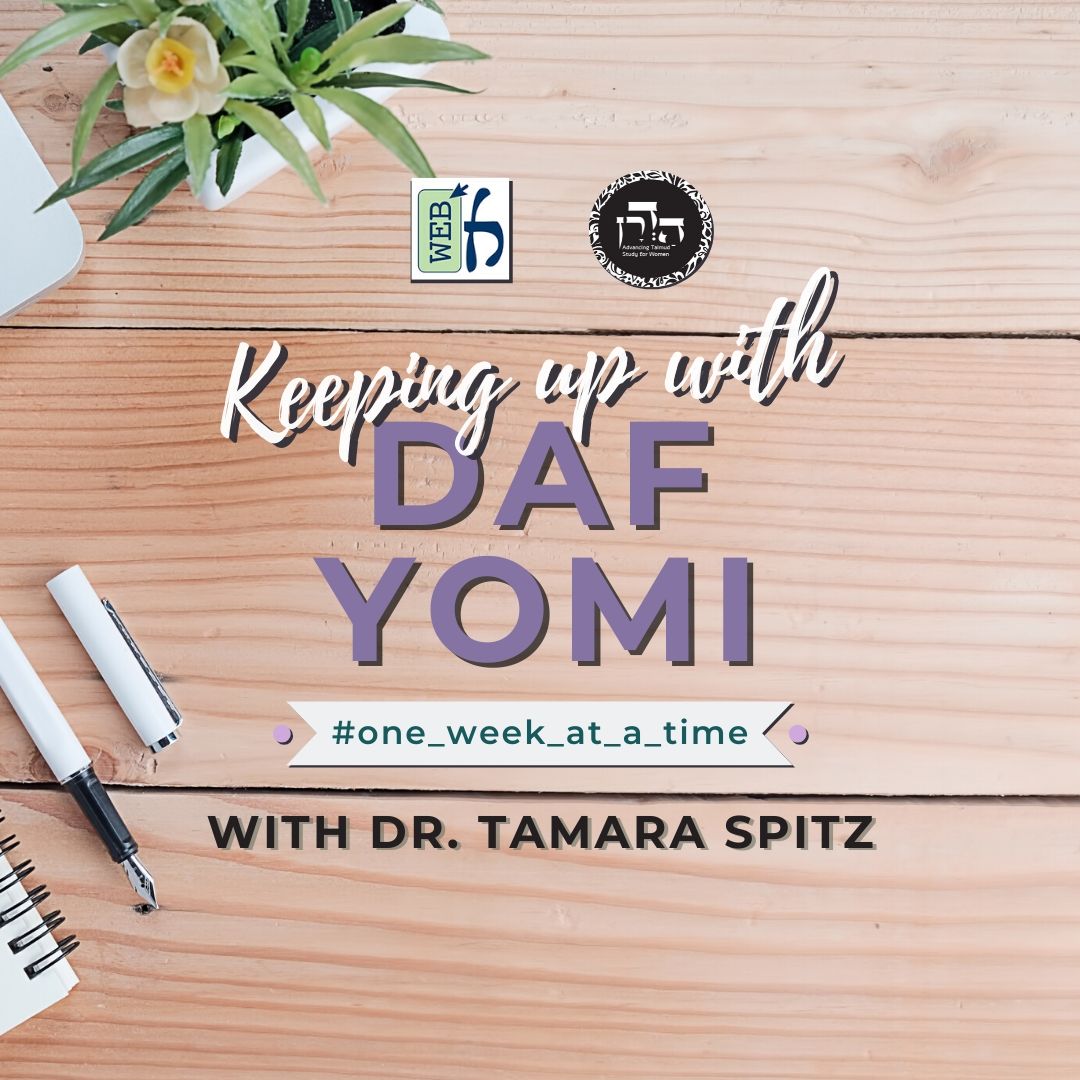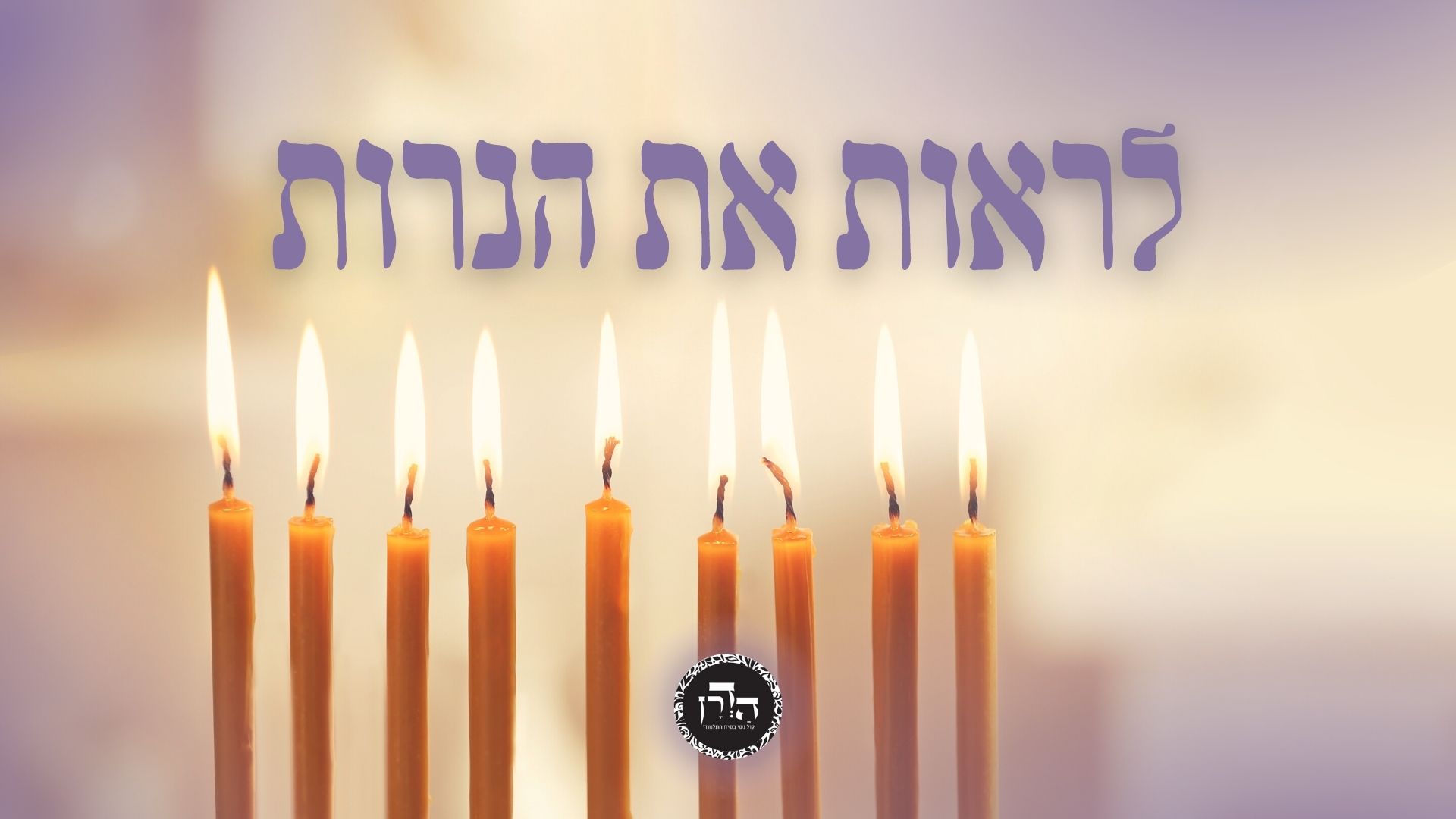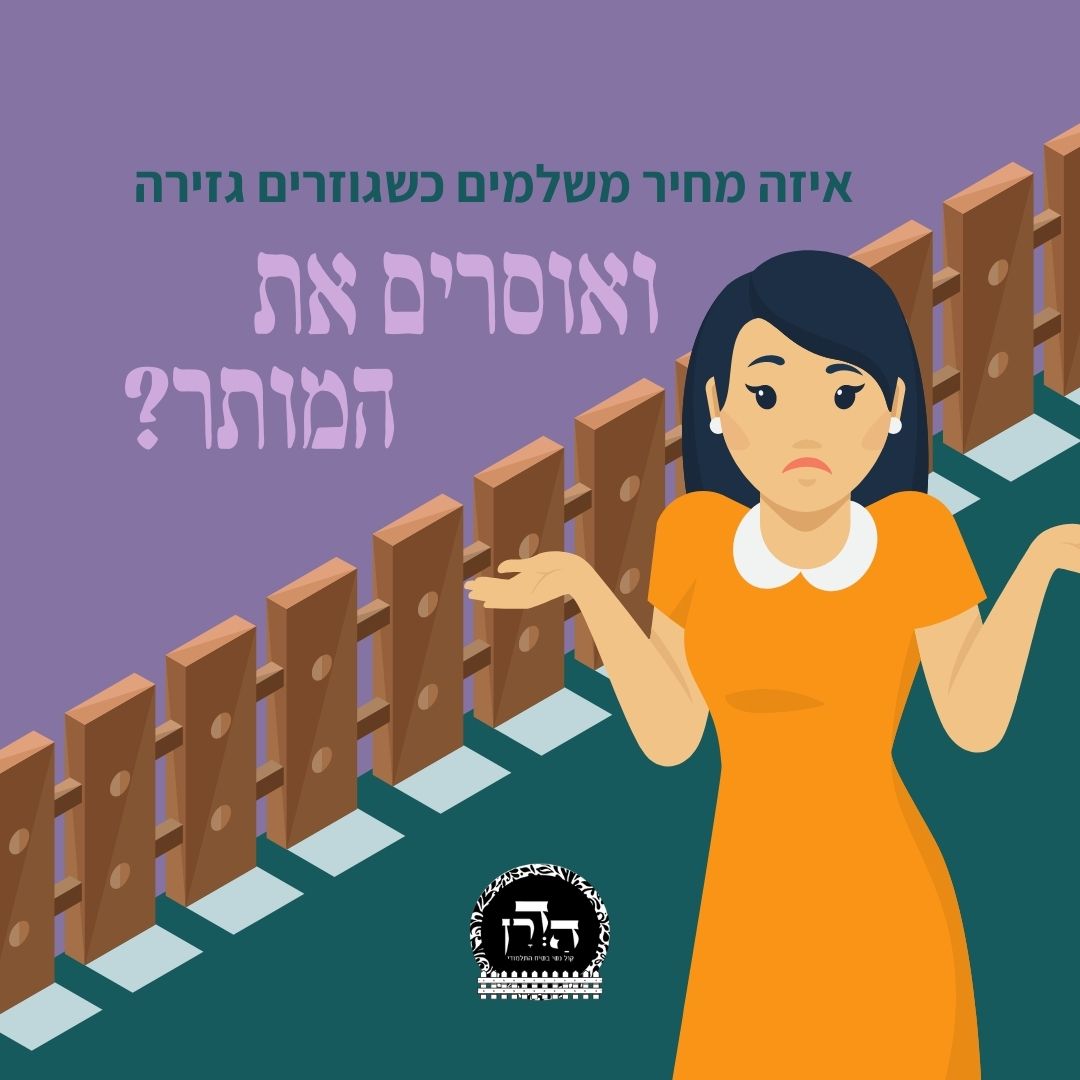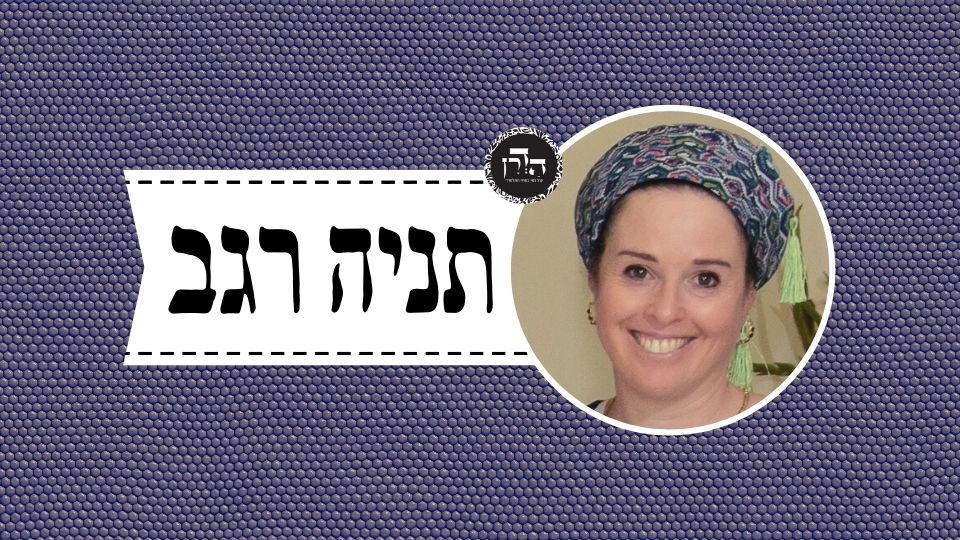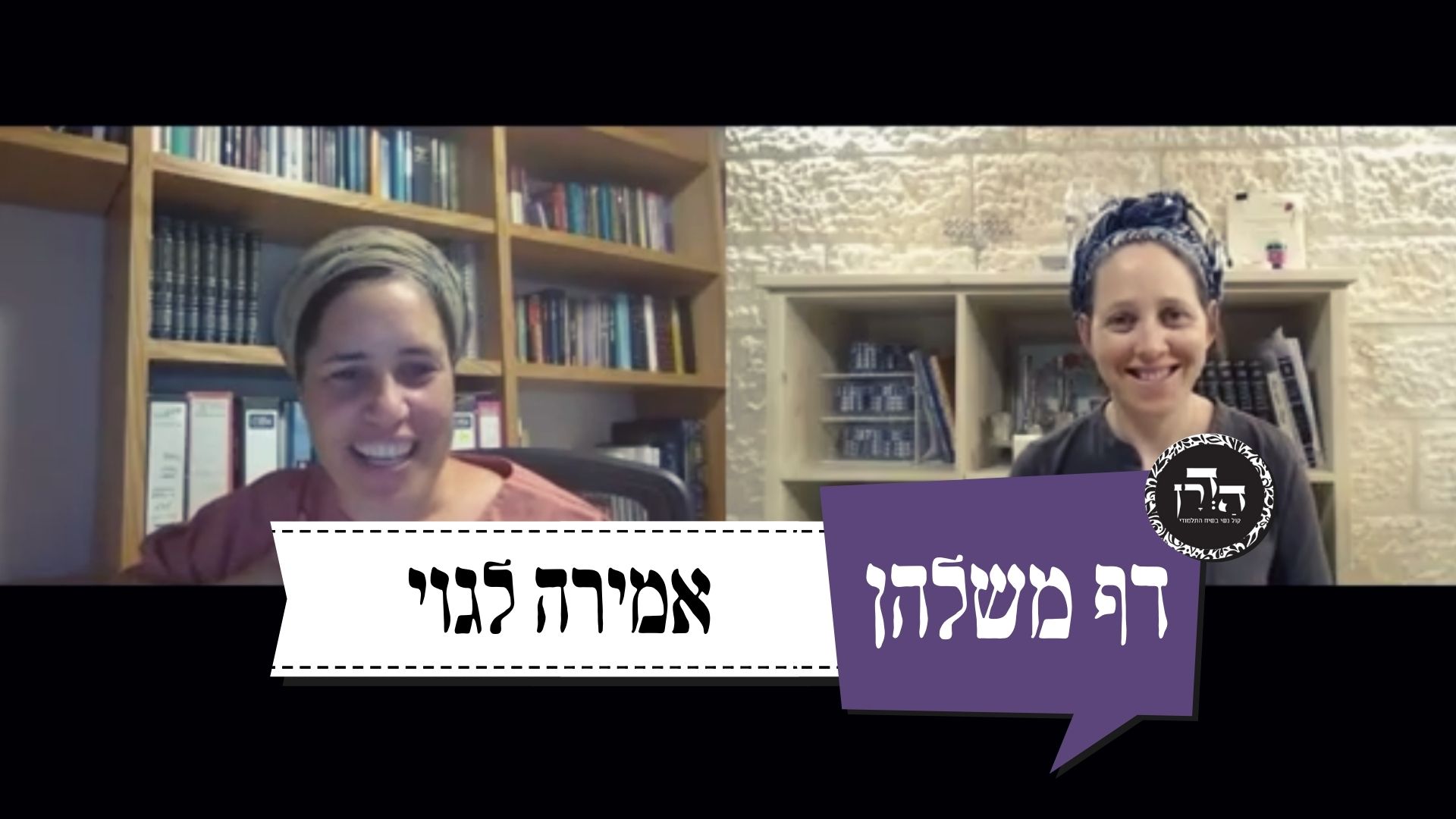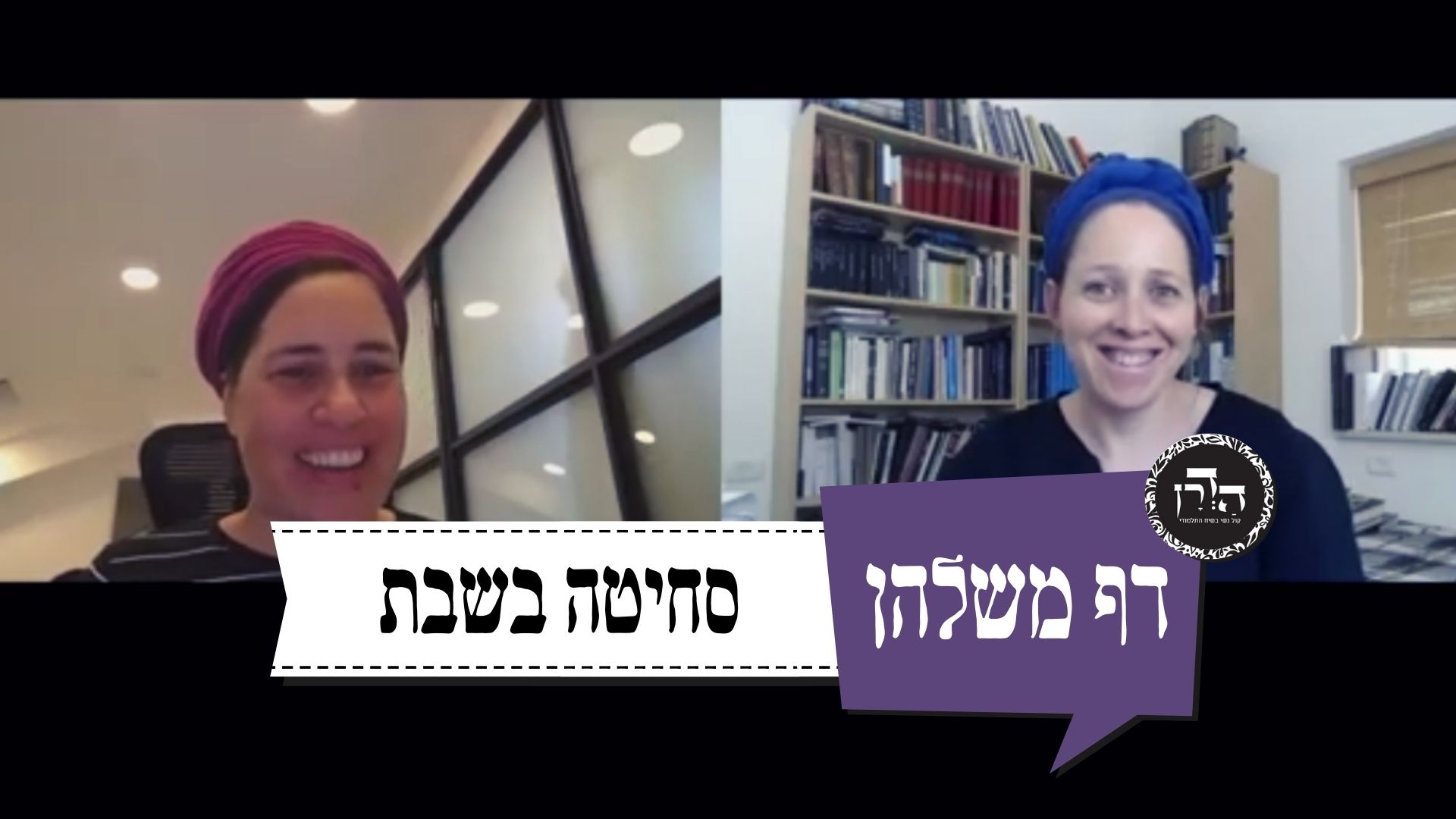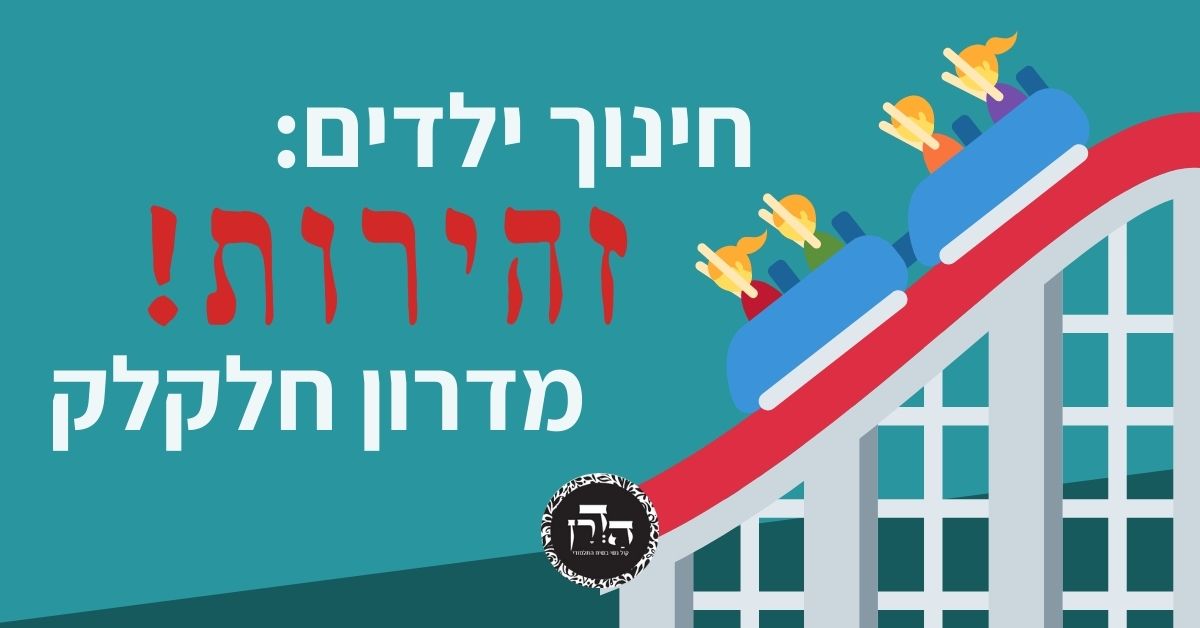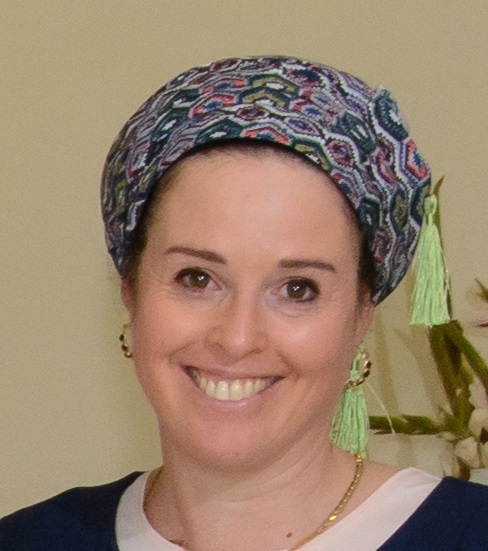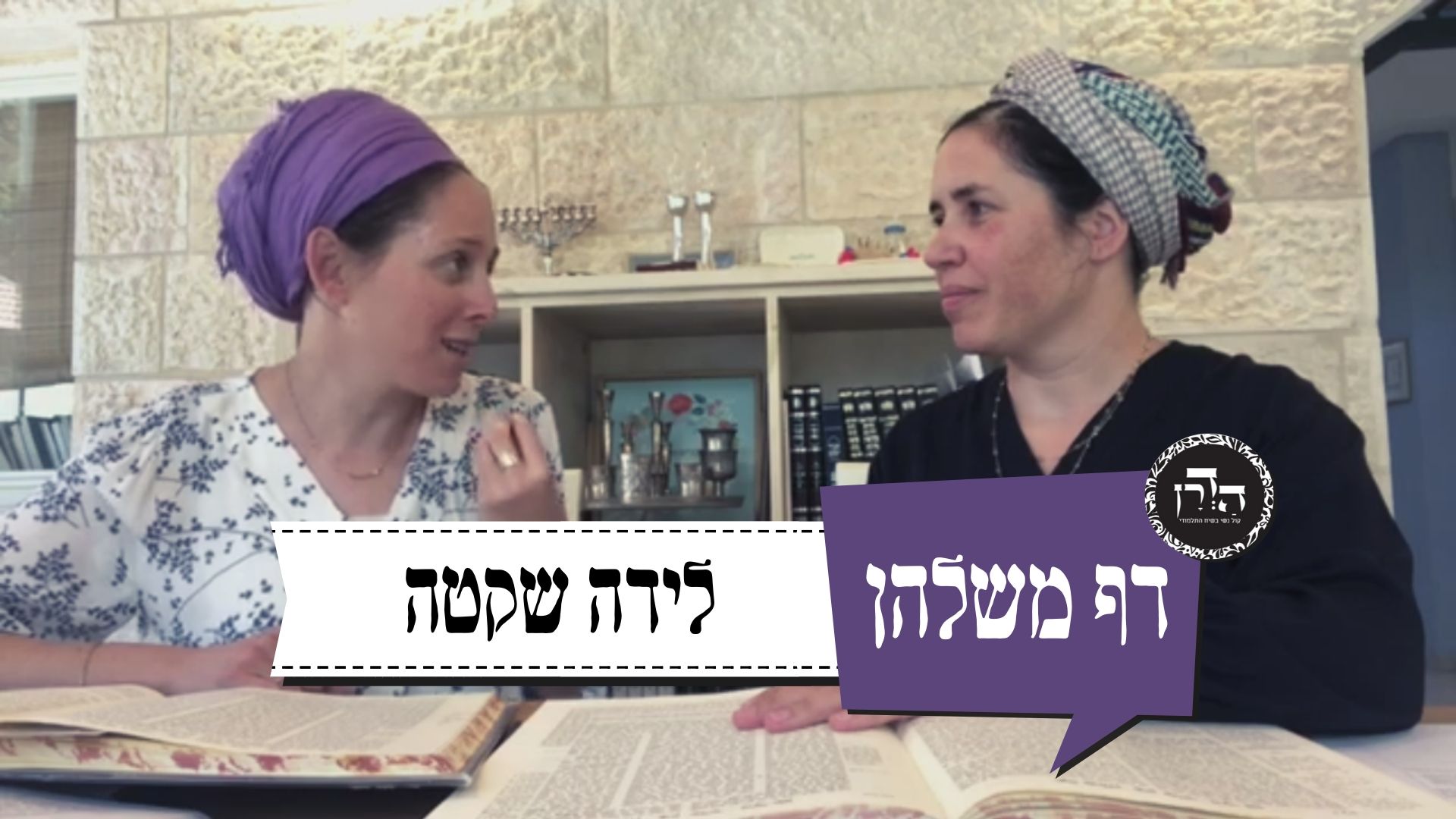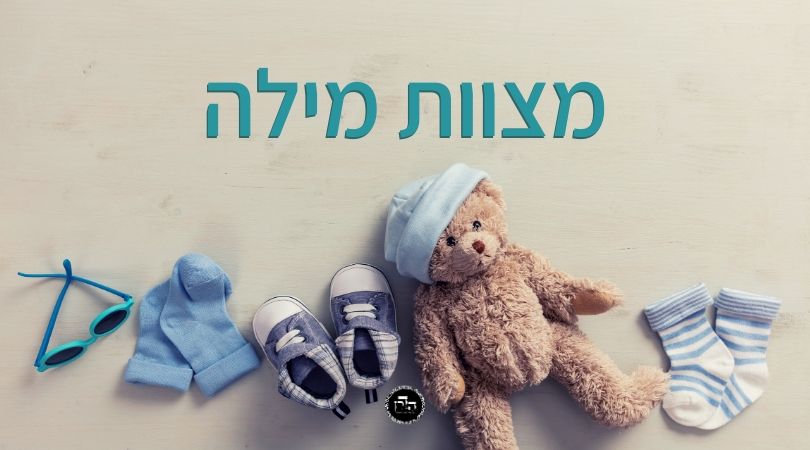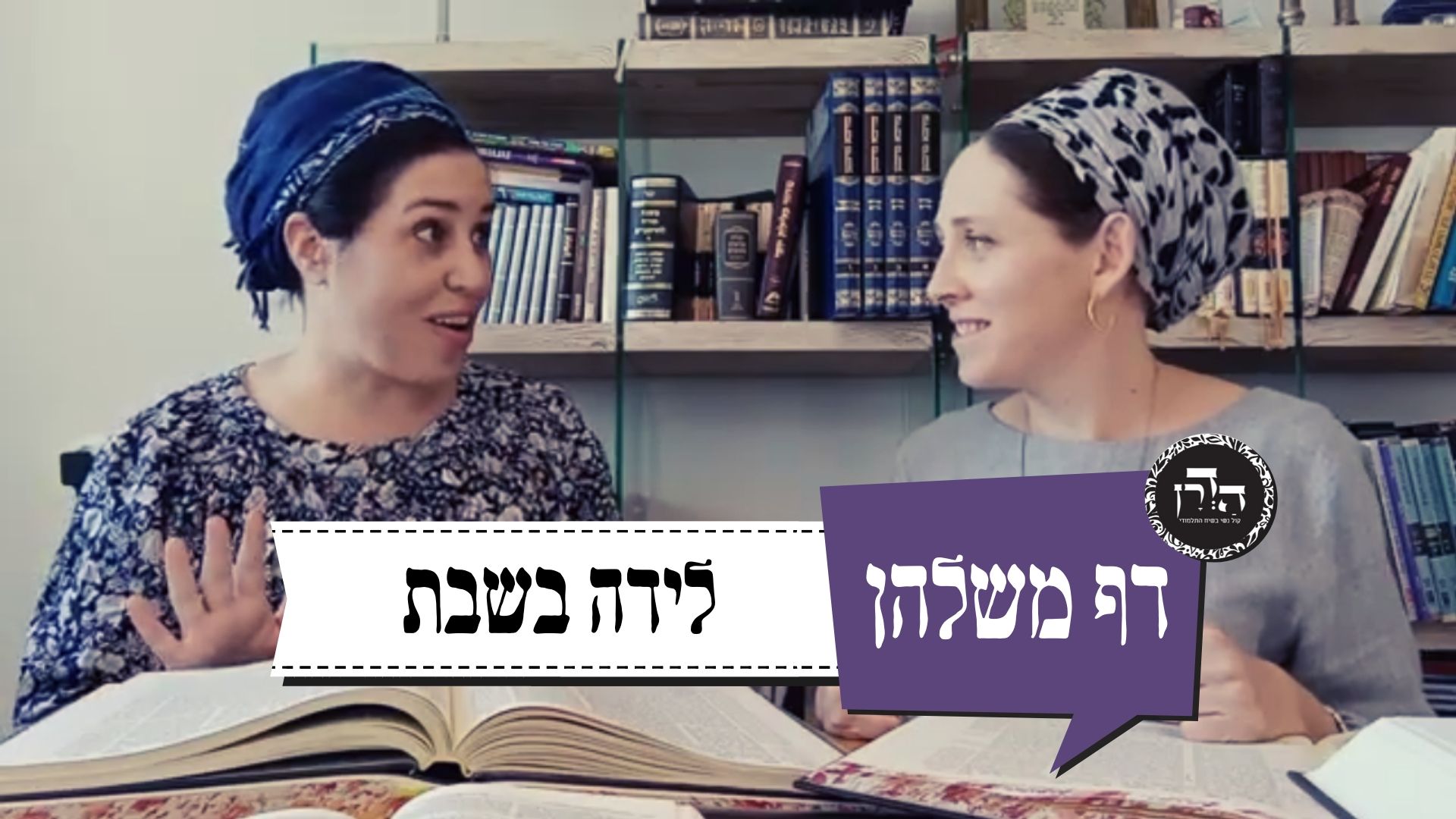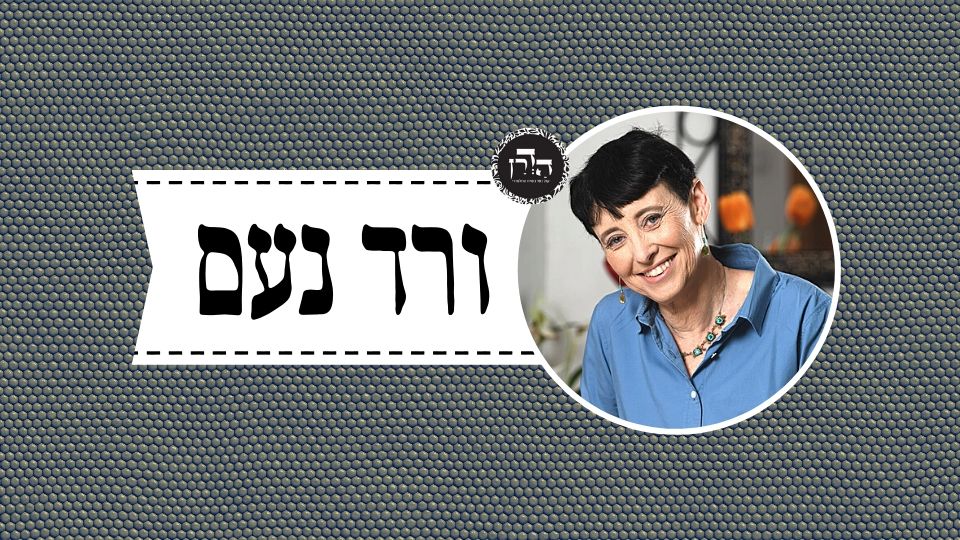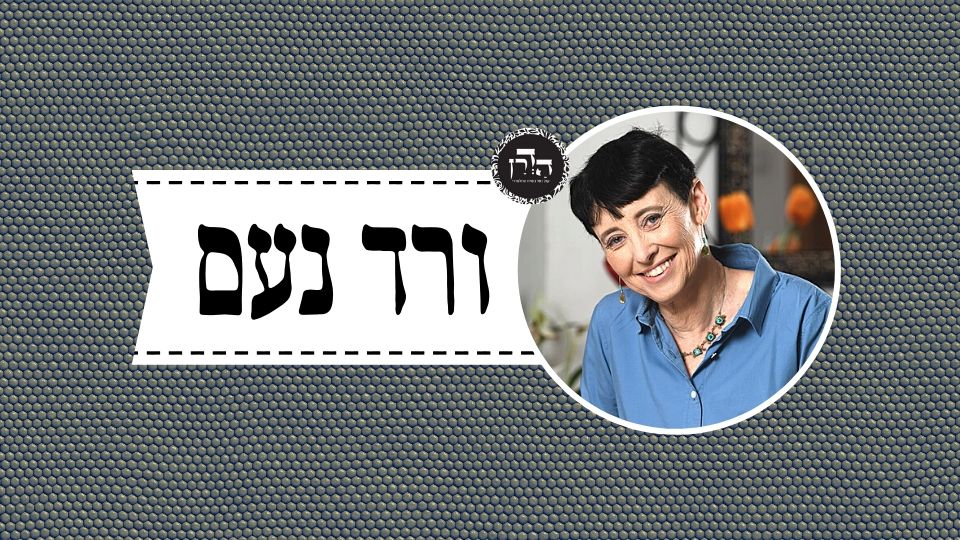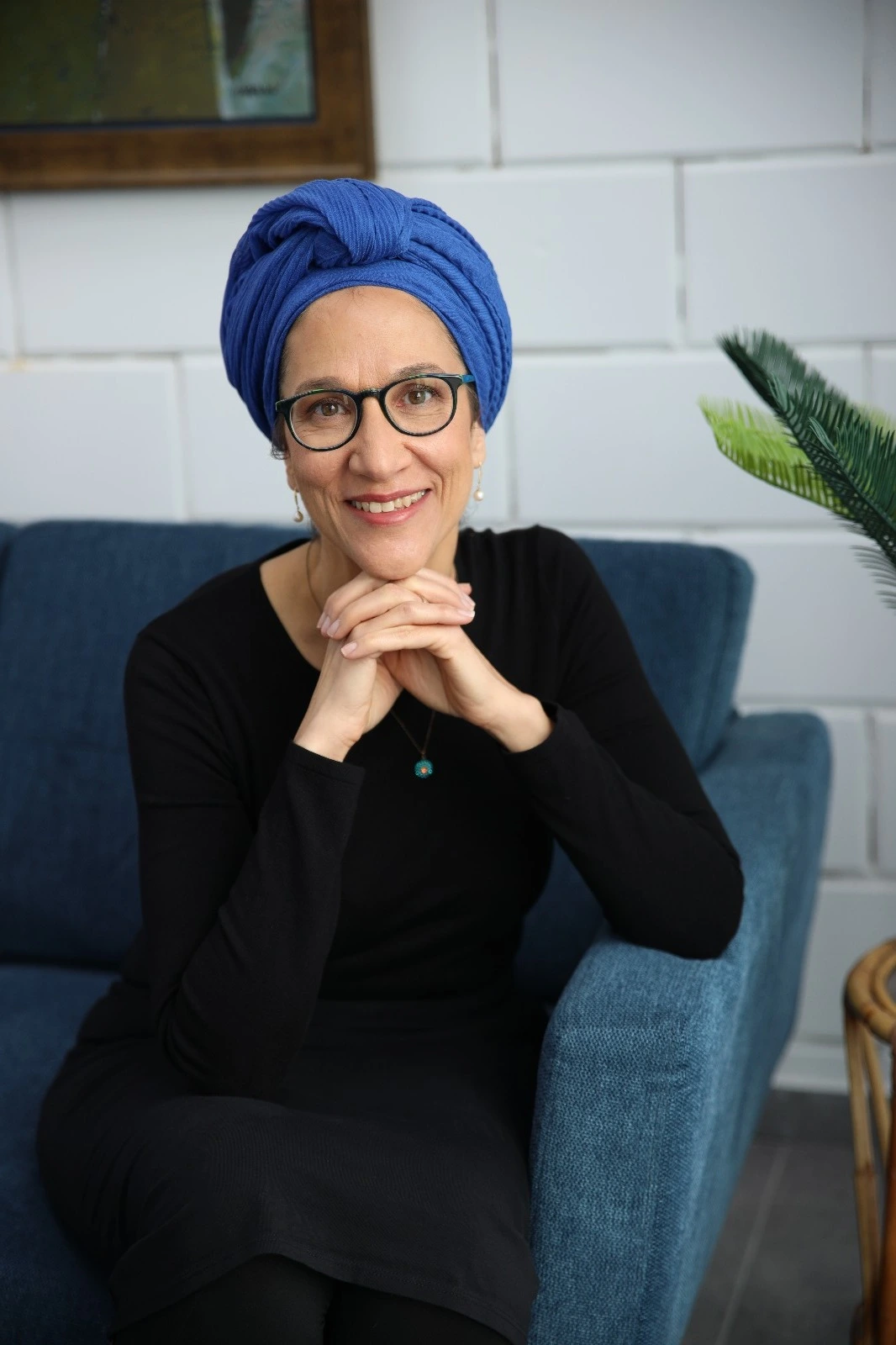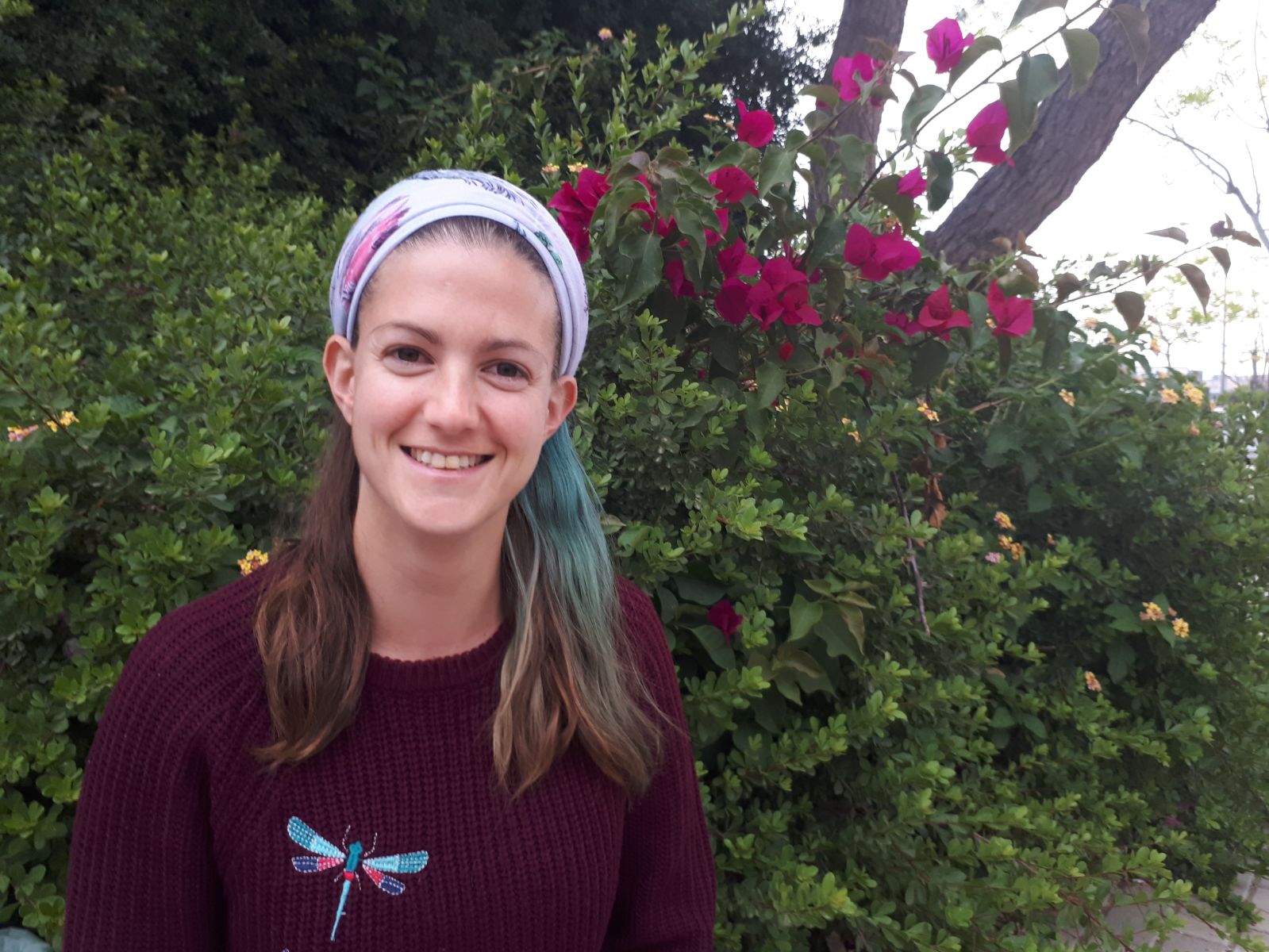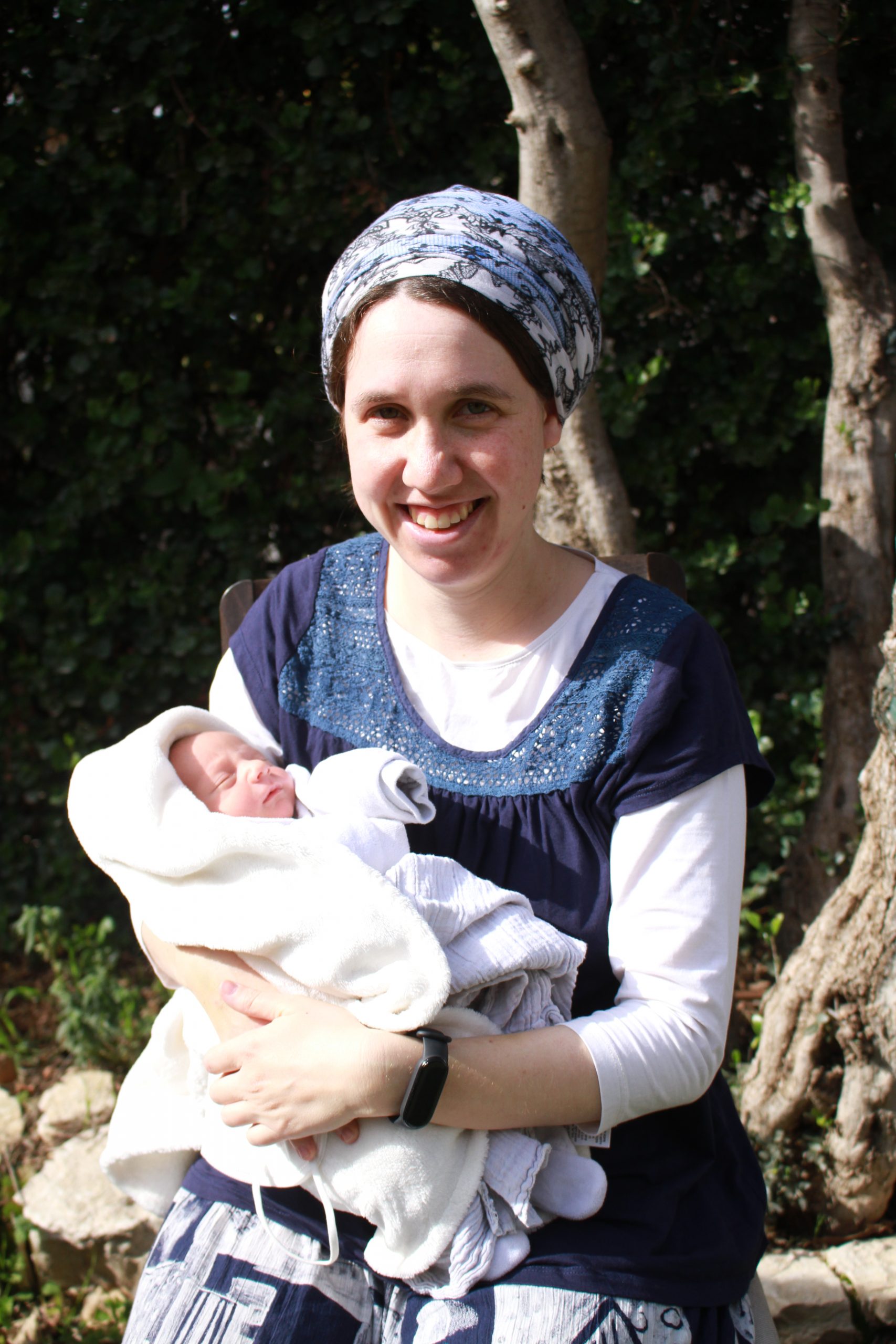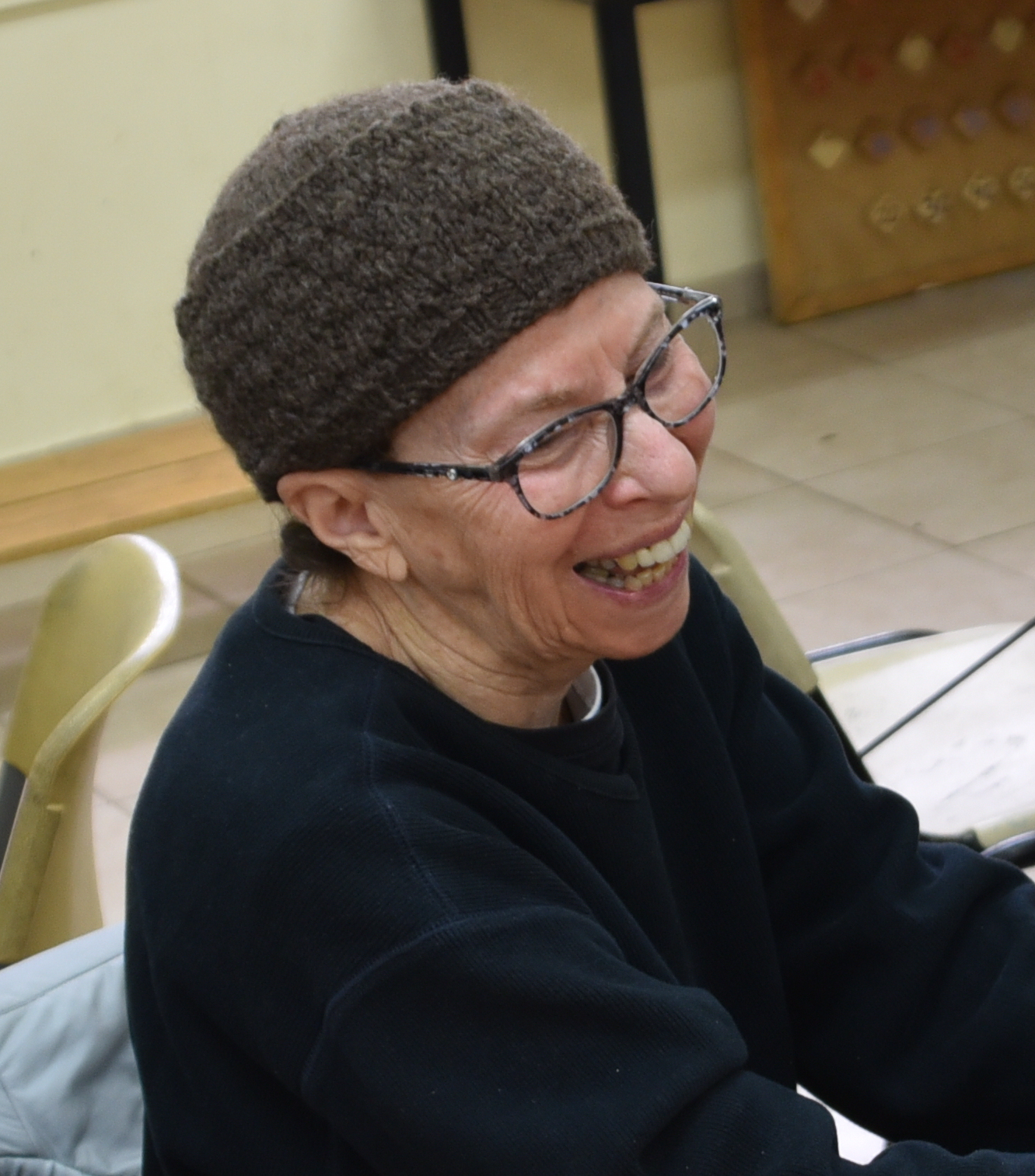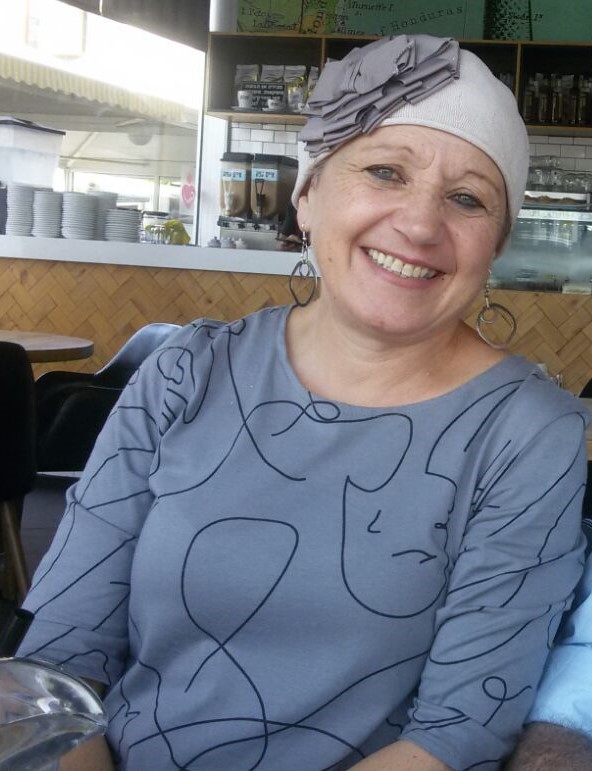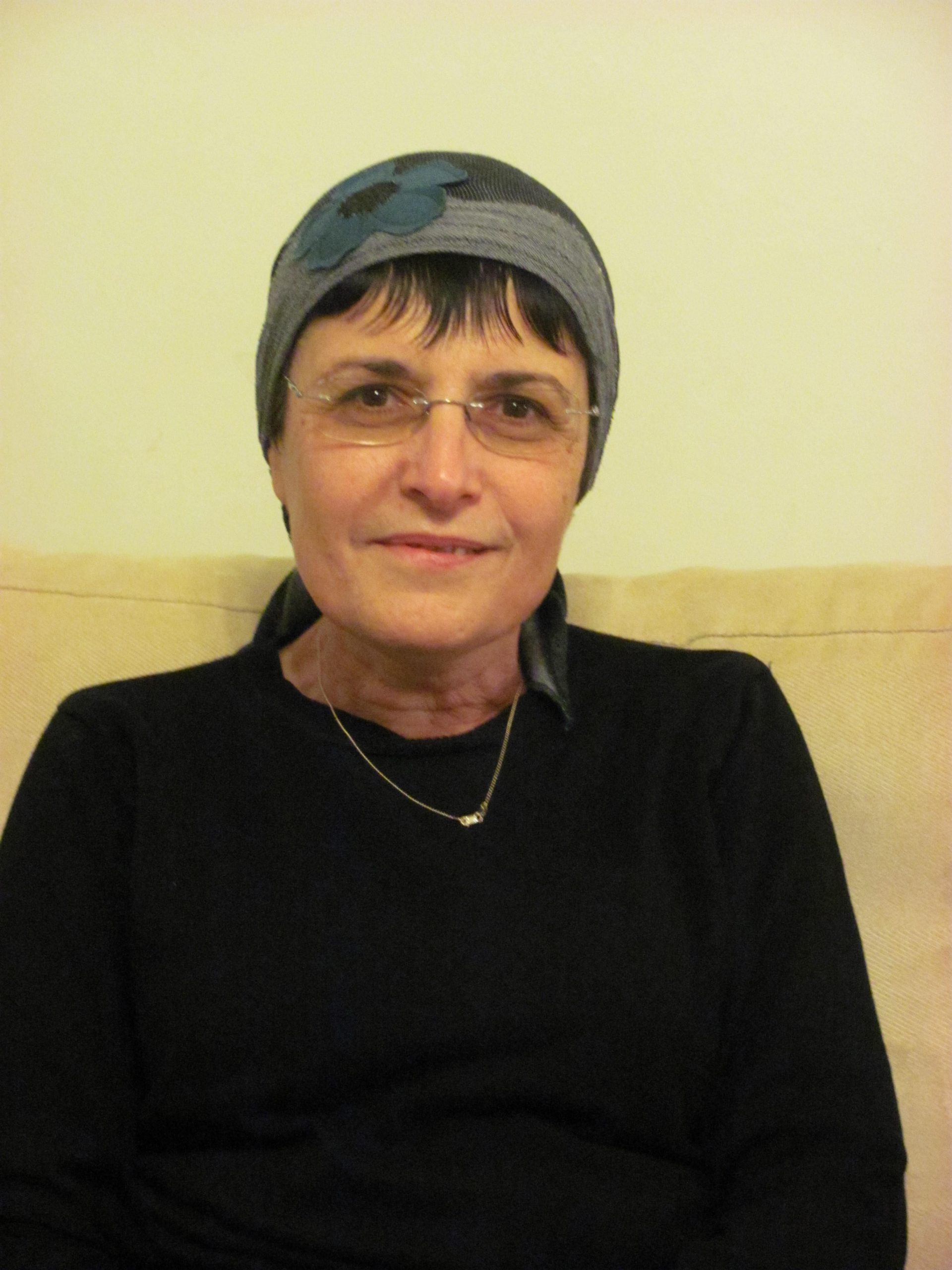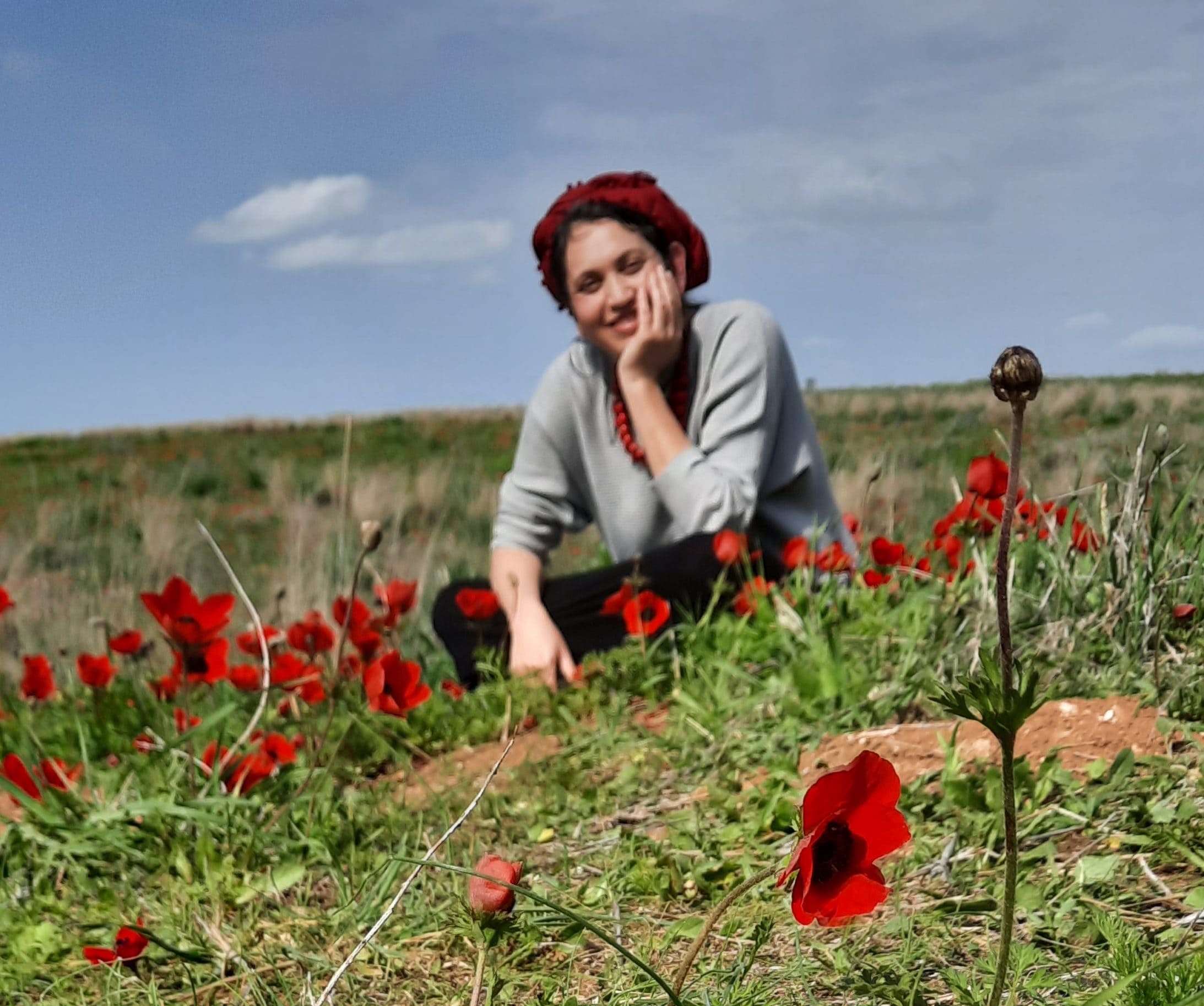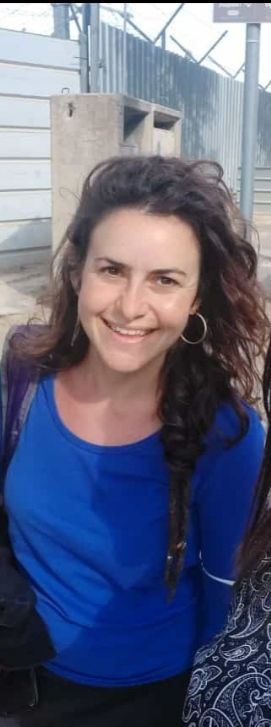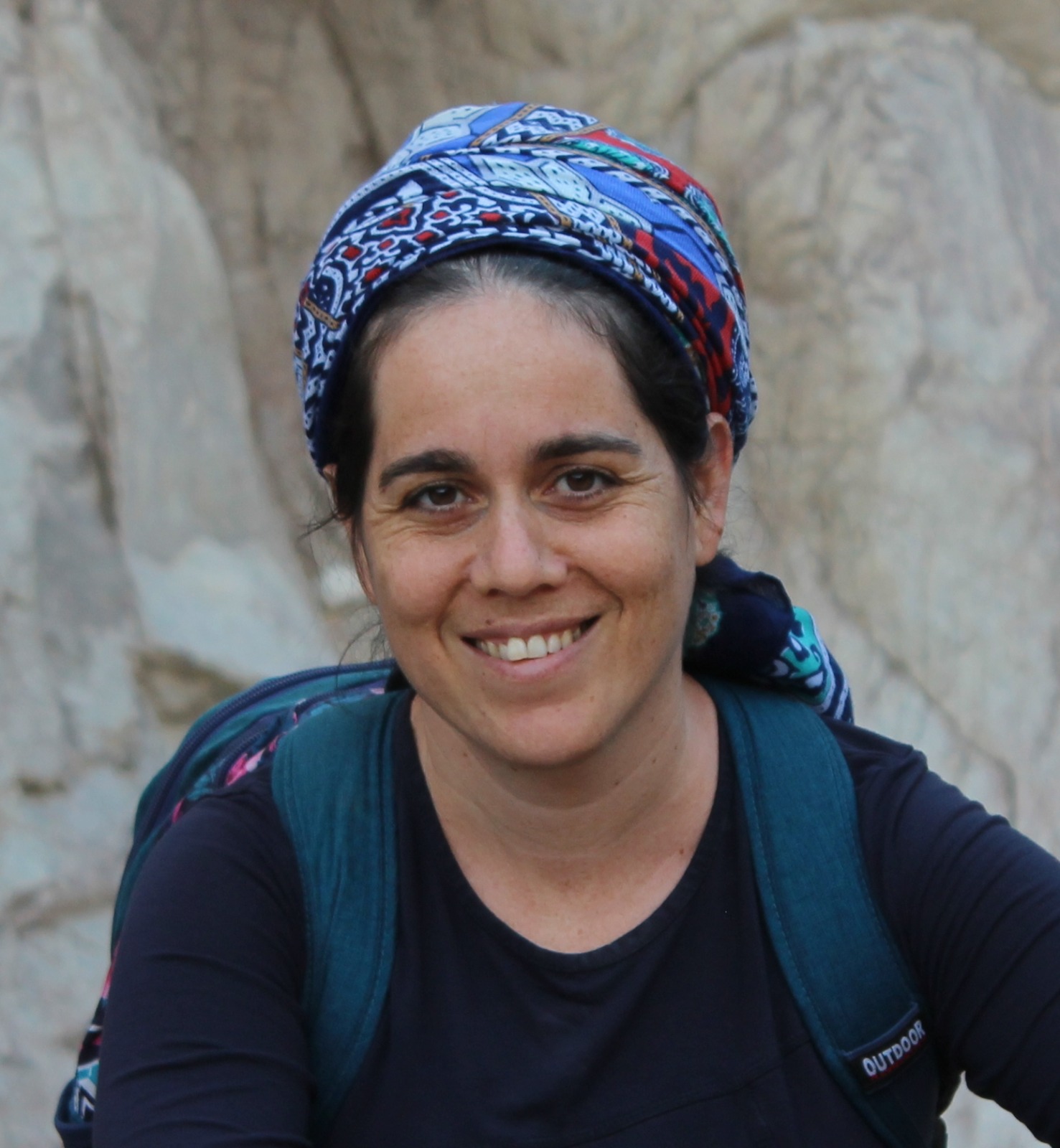שבת קיב
קִיטְרָא דְּקָטְרִי בִּזְמָמָא וְקִיטְרָא דְּקָטְרִי בְּאִיסְטָרִידָא, חִיּוּבָא הוּא דְּלֵיכָּא, הָא אִיסּוּרָא — אִיכָּא. וְיֵשׁ שֶׁמּוּתָּרִין לְכַתְּחִילָּה, וּמַאי נִיהוּ — קוֹשֶׁרֶת מִפְתְּחֵי חֲלוּקָהּ.
A knot with which one ties a strap to the camel’s nose ring and a knot with which one ties a rope to the ring fixed to the bow of a ship, with regard to liability to bring a sin-offering, there is none; however, there is a rabbinic prohibition. And there are knots that are permitted to be tied on Shabbat ab initio. And which are these? The knot that a woman uses to tie the opening of her robe.
מִפְתַּח חֲלוּקָהּ. פְּשִׁיטָא! לָא צְרִיכָא, דְּאִית לֵיהּ תְּרֵי דַשֵּׁי. מַהוּ דְתֵימָא: חֲדָא מִינַּיְיהוּ בַּטּוֹלֵי מְבַטֵּיל [לַהּ], קָא מַשְׁמַע לַן.
We learned in the mishna: A woman may tie the opening of her robe on Shabbat. The Gemara states: This is obvious, as the knot is meant to be untied and is therefore not permanent. The Gemara explains: It is only necessary to state this halakha in a case where the robe has two laces with which to tie the opening. Lest you say that one of them may become void because the woman can remove the garment even with one string, leaving the one not untied a permanent knot, it therefore teaches us that neither knot is considered permanent.
וְחוּטֵי סְבָכָה. פְּשִׁיטָא! לָא צְרִיכָא, דִּרְוִיחָא לַהּ. מַהוּ דְתֵימָא: מִישְׁלָף שָׁלְפָא לַהּ, קָא מַשְׁמַע לַן דְּאִשָּׁה חָסָה עַל שְׂעָרָהּ וּמִישְׁרָא שָׁרְיָא לַהּ.
We learned in the mishna: And a woman may tie the strings of her hairnet on Shabbat. The Gemara states: This is obvious. The Gemara clarifies the matter: It was only necessary to state this halakha in a case where the hairnet is tied loosely on her head. Lest you say that she sometimes removes it without untying it and the knots remain, the mishna teaches us that a woman is protective of her hair and avoids pulling it out, and therefore she unties the hairnet to avoid damaging her hair.
וּרְצוּעוֹת מִנְעָל וְסַנְדָּל. אִיתְּמַר: הִתִּיר רְצוּעוֹת מִנְעָל וְסַנְדָּל, תָּנֵי חֲדָא: חַיָּיב חַטָּאת, וְתַנְיָא אִידַּךְ: פָּטוּר אֲבָל אָסוּר, וְתַנְיָא אִידַּךְ: מוּתָּר לְכַתְּחִילָּה. קַשְׁיָא מִנְעָל אַמִּנְעָל, קַשְׁיָא סַנְדָּל אַסַּנְדָּל.
We learned in the mishna: And it is permitted to tie the straps of a shoe or a sandal on Shabbat. It was stated with regard to one who untied the straps of a shoe or a sandal: One baraita taught that one who did so on Shabbat is liable to bring a sin-offering; and it was taught in another baraita that one is exempt by Torah law, and it is prohibited to untie those straps ab initio; and it was taught in another baraita that it is permitted to untie these knots ab initio. This is difficult, as there is a contradiction between one statement with regard to a shoe and another statement with regard to the straps of a shoe; and this is difficult, as there is a contradiction between one statement with regard to the straps of a sandal and another statement with regard to the straps of a sandal.
מִנְעָל אַמִּנְעָל לָא קַשְׁיָא: הָא דְּקָתָנֵי חַיָּיב חַטָּאת — בִּדְאוּשְׁכָּפֵי. פָּטוּר אֲבָל אָסוּר — בְּדַרְבָּנַן. מוּתָּר לְכַתְּחִלָּה — בְּדִבְנֵי מָחוֹזָא.
The Gemara explains: The apparent contradiction between one statement with regard to a shoe and the other statement with regard to a shoe is not difficult, as that baraita, which teaches that one is liable to bring a sin-offering, is referring to a shoemaker’s knot, which is permanent as it holds the shoe together. The baraita that states that he is exempt by Torah law and it is prohibited by rabbinic decree is referring to the shoe worn by Sages, as they often tie their shoes loosely so they can easily put on and remove their shoes. The baraita that teaches that it is permitted to tie shoes ab initio is referring to such knots used by the residents of the city of Meḥoza, who are meticulous in their dress and who tie and untie their shoes every day.
סַנְדָּל אַסַּנְדָּל לָא קַשְׁיָא: הָא דְּקָתָנֵי חַיָּיב חַטָּאת — בִּדְטַיָּיעֵי דְּקָטְרִי אוּשְׁכָּפֵי. פָּטוּר אֲבָל אָסוּר — בִּדְחוּמַרְתָּא דְּקָטְרִי אִינְהוּ. מוּתָּר לְכַתְּחִילָּה — בְּסַנְדָּל דְּנָפְקִי בֵּיהּ בֵּי תְרֵי, כִּדְרַב יְהוּדָה. דְּרַב יְהוּדָה אֲחוּהּ דְּרַב סַלָּא חֲסִידָא הֲוָה לֵיהּ הָהוּא זוּגָא דְּסַנְדָּלֵי, זִמְנִין דְּנָפֵיק בֵּיהּ אִיהוּ, זִימְנִין נָפֵיק בֵּיהּ יָנוֹקֵיהּ. אֲתָא לְקַמֵּיהּ דְּאַבָּיֵי, אֲמַר לֵיהּ: כְּהַאי גַּוְנָא מַאי? אֲמַר לֵיהּ: חַיָּיב חַטָּאת.
Similarly, the contradiction between one statement with regard to the straps of a sandal and the other statement with regard to the straps of a sandal is not difficult, as that baraita, which teaches that one is liable to bring a sin-offering, is referring to Arab sandals, for which shoemakers tie permanent knots. And the baraita that teaches that he is exempt by Torah law and it is prohibited by rabbinic decree is referring to straps that they, i.e., ordinary people, tie. The baraita that teaches that it is permitted to tie and untie the straps of a sandal ab initio is referring to a sandal shared by two people who alternate going out at different times. They untie and retie the straps each time to ensure that the sandals will fit properly, like the sandals of Rav Yehuda; as Rav Yehuda, brother of Rav Sala Ḥasida, had a pair of sandals, and sometimes he would go out wearing them and sometimes his child would go out wearing them. Rav Yehuda came before Abaye and said to him: What is the ruling in a case of this kind? May I tie the straps on Shabbat? Abaye said to him: Doing so renders you liable to bring a sin-offering.
אֲמַר לֵיהּ: הַשְׁתָּא פָּטוּר אֲבָל אָסוּר קָא קַשְׁיָא לִי, ״חַיָּיב חַטָּאת״ קָאָמְרַתְּ לִי?! מַאי טַעְמָא? אֲמַר לֵיהּ: מִשּׁוּם דִּבְחוֹל נָמֵי זִימְנִין נָפֵיקְנָא בֵּיהּ אֲנָא, זִימְנִין נָפֵיק בֵּיהּ יָנוֹקָא. אֲמַר לֵיהּ: אִי הָכִי, מוּתָּר לְכַתְּחִילָּה.
Rav Yehuda said to him: Now, even if your ruling in that case had been that one is exempt by Torah law but it is still prohibited by rabbinic law, it would be difficult for me, and you say to me that the ruling is that one is liable to bring a sin-offering. Abaye asked him: What is the reason for that difficulty? Rav Yehuda said to him: Because on weekdays too I sometimes go out wearing them and sometimes my child goes out wearing them. Abaye said to him: If so, it is permitted to untie the straps ab initio.
רַבִּי יִרְמְיָה הֲוָה קָאָזֵיל בָּתְרֵיהּ דְּרַבִּי אֲבָהוּ בְּכַרְמְלִית. אִיפְּסִיק רְצוּעָה דְּסַנְדָּלֵיהּ. אֲמַר לֵיהּ: מַאי אֶעֱבֵיד לֵיהּ? אֲמַר לֵיהּ: שְׁקוֹל גֶּמִי לַח דַּחֲזֵי לְמַאֲכַל בְּהֵמָה, וּכְרוֹךְ עִילָּוֵיהּ. אַבָּיֵי הֲוָה קָאֵי קַמֵּיהּ דְּרַב יוֹסֵף. אִיפְּסִיק לֵיהּ רְצוּעָה. אֲמַר לֵיהּ: מַאי אֶיעֱבֵיד לֵיהּ? אֲמַר לֵיהּ: שִׁבְקֵיהּ. מַאי שְׁנָא מִדְּרַבִּי יִרְמְיָה? הָתָם לָא מִינְּטַר, הָכָא מִינְּטַר. וְהָא מָנָא הוּא, דְּאִי בָּעֵינָא הָפֵיכְנָא לֵיהּ מִיָּמִין לִשְׂמֹאל? אֲמַר לֵיהּ: מִדְּקָמְתָרֵץ רַבִּי יוֹחָנָן אַלִּיבָּא דְּרַבִּי יְהוּדָה, שְׁמַע מִינַּהּ הֲלָכָה כְּרַבִּי יְהוּדָה.
Rabbi Yirmeya was walking after Rabbi Abbahu in a karmelit on Shabbat when the strap of his sandal tore. Rabbi Yirmeya said to Rabbi Abbahu: What should I do to it? Rabbi Abbahu said to him: Take a moist reed fit for animal consumption and wrap it around the sandal to fasten it. And the Gemara relates: Abaye was standing before Rav Yosef on Shabbat when the strap of his sandal tore. Abaye said to Rav Yosef: What should I do with it? He said to him: Leave it and do not move it. Abaye said to him: How is this case different from that of Rabbi Yirmeya? He answered him: There the sandal would not have been protected; here it will be protected. Abaye said to him: But it remains a utensil and may therefore be moved on Shabbat, as if I so desire, I can switch it from the right foot to the left foot and wear it. Rav Yosef said to him: From the fact that Rabbi Yoḥanan explains the matter in accordance with the opinion of Rabbi Yehuda, as will be explained, conclude from it that the halakha is in accordance with the opinion of Rabbi Yehuda. Therefore, a torn sandal is not considered to be a utensil even if it were switched, i.e., turned around.
מַאי הִיא? דְּתַנְיָא: סַנְדָּל שֶׁנִּפְסְקוּ שְׁתֵּי אׇזְנָיו, אוֹ שְׁתֵּי תְרֵסִיּוֹתָיו, אוֹ שֶׁנִּיטַּל כׇּל הַכַּף שֶׁלּוֹ — טָהוֹר. אַחַת מֵאׇזְנָיו, אוֹ אַחַת מִתְּרֵסִיּוֹתָיו, אוֹ שֶׁנִּיטַּל רוֹב הַכַּף שֶׁלּוֹ — טָמֵא. רַבִּי יְהוּדָה אוֹמֵר: נִפְסְקָה פְּנִימִית — טָמֵא. הַחִיצוֹנָה — טָהוֹר. וְאָמַר עוּלָּא, וְאִיתֵּימָא רַבָּה בַּר בַּר חָנָה אָמַר רַבִּי יוֹחָנָן: כְּמַחֲלוֹקֶת לְעִנְיַן טוּמְאָה כָּךְ מַחֲלוֹקֶת לְעִנְיַן שַׁבָּת, אֲבָל לֹא לְעִנְיַן חֲלִיצָה.
The Gemara asks: What is that opinion of Rabbi Yehuda? As it was taught in a baraita: A sandal that was ritually impure, whose two ears that hold the straps or whose two straps (ge’onim) broke, or whose entire sole was removed, becomes ritually pure because it is no longer a utensil. However, if only one of its ears or one of its straps broke, or if only most but not all of its sole was removed, it remains impure. Rabbi Yehuda says: If the inner strap broke it remains impure, because the outer strap can still be used. If the outer strap broke it is rendered pure. And Ulla, and some say Rabba bar bar Ḥana, said that Rabbi Yoḥanan said: Like there is a dispute with regard to ritual impurity, so too, there is a dispute with regard to Shabbat, i.e., whether or not it is permitted to wear such a sandal on Shabbat. However, there is no dispute with regard to ḥalitza.
וְהָוֵינַן בַּהּ: [רַבִּי יוֹחָנָן] אַלִּיבָּא דְּמַאן? אִילֵימָא אַלִּיבָּא דְּרַבָּנַן: מִדִּלְעִנְיַן טוּמְאָה מָנָא הָוֵי — לְעִנְיַן שַׁבָּת נָמֵי מָנָא הָוֵי, אֲבָל לֹא לַחֲלִיצָה — דְּלָאו מָנָא הוּא, וְהָתְנַן: חָלְצָה שֶׁל שְׂמֹאל בַּיָּמִין חֲלִיצָתָהּ כְּשֵׁרָה. וְאֶלָּא אַלִּיבָּא דְּרַבִּי יְהוּדָה: מִדִּלְעִנְיַן טוּמְאָה לָאו מָנָא הוּא — לְעִנְיַן שַׁבָּת נָמֵי לָאו מָנָא הוּא, אֲבָל לֹא לַחֲלִיצָה דְּמָנָא הוּא.
And we discussed this issue: In accordance with whose opinion is the statement of Rabbi Yoḥanan? If you say that it is in accordance with the opinion of the Rabbis, and the baraita is explained as follows: From the fact that it is a utensil with regard to ritual impurity, it is also a utensil with regard to Shabbat, but it is not considered a utensil with regard to ḥalitza. However, didn’t we learn in a mishna: If she removed the left shoe, which was on the right foot of her brother-in-law, her ḥalitza is valid? Apparently, a woman can perform ḥalitza even when the shoe is on the wrong foot, and it is not deemed unfit for ḥalitza. Rather, Rabbi Yoḥanan’s opinion must be in accordance with the opinion of Rabbi Yehuda, and is saying the following: From the fact that with regard to impurity it is not a utensil, with regard to Shabbat it is also not a utensil. However, that is not the case with regard to ḥalitza, for which it is a utensil.
אֵימַר דְּאָמְרִינַן חָלְצָה שֶׁל שְׂמֹאל בַּיָּמִין חֲלִיצָתָהּ כְּשֵׁרָה — הִיכָא דִּלְמִילְּתֵיהּ מָנָא הוּא, הָכָא לְמִילְּתֵיהּ לָאו מָנָא הוּא, דְּהָא אָמַר רַבִּי יְהוּדָה: נִפְסְקָה הַחִיצוֹנָה טָהוֹר — אַלְמָא לָאו מָנָא הוּא! לְעוֹלָם אַלִּיבָּא דְּרַבִּי יְהוּדָה. אֵימָא: וְכֵן לַחֲלִיצָה. וְהָא קָמַשְׁמַע לַן: דְּכִי אָמְרִינַן חָלְצָה שֶׁל שְׂמֹאל בְּשֶׁל יָמִין חֲלִיצָתָהּ כְּשֵׁרָה — הֵיכָא
The Gemara asks: Say that we said that if she removed the left shoe which was on the right foot, her ḥalitza is valid, that applies only in a case where it is fit as a utensil for its usual purpose, i.e., it can be used as footwear. However, here it is not fit as a utensil for its usual purpose, as Rabbi Yehuda said: If the outer strap of the sandal tore, the sandal is rendered ritually pure. Apparently, according to Rabbi Yehuda, it is not a utensil. Rabbi Yoḥanan’s statement is difficult according to both opinions. The Gemara answers: Actually, his opinion is in accordance with the opinion of Rabbi Yehuda; however, emend his statement and say that Rabbi Yoḥanan said: And this is the halakha with regard to ḥalitza as well. And this teaches us that when we say that if she removed the left shoe that was on the right foot her ḥalitza is valid, that is only in a case where
דִּלְמִילְּתֵיהּ מָנָא הוּא, אֲבָל הָכָא — לְמִילְּתֵיהּ לָאו מָנָא הוּא.
it is fit as a utensil for its usual purpose, i.e., it can be used as footwear. However, here it is not fit as a utensil for its usual purpose.
וּמִי אָמַר רַבִּי יוֹחָנָן הָכִי? וְהָאָמַר רַבִּי יוֹחָנָן: הֲלָכָה כִּסְתַם מִשְׁנָה, וּתְנַן: סַנְדָּל שֶׁנִּפְסְקָה אַחַת מֵאׇזְנָיו וְתִיקְּנָהּ — טָמֵא מִדְרָס, נִפְסְקָה שְׁנִיָּה וְתִיקְּנָהּ — טָהוֹר מִלְּטַמֵּא מִדְרָס, אֲבָל טָמֵא מַגַּע מִדְרָס. מַאי לָאו לָא שְׁנָא פְּנִימִית וְלָא שְׁנָא חִיצוֹנָה!
The Gemara asks: Did Rabbi Yoḥanan in fact say that the halakha is in accordance with Rabbi Yehuda, who says that if the outer strap broke the sandal becomes pure? Didn’t Rabbi Yoḥanan say: The halakha is in accordance with an unattributed mishna? And we learned in a mishna: A sandal that became ritually impure with impurity imparted by the treading of a zav, and one of its ears broke and he repaired it, this sandal is still impure with ritual impurity imparted by treading, since a broken ear does not render the sandal useless and it remains a utensil. If the second ear broke and he repaired it, it is ritually pure in the sense that it no longer renders other objects ritually impure in the same way a vessel that became a primary source of ritual impurity by means of impurity imparted by treading does, since when both ears tear it is no longer a utensil. However, it is itself ritually impure with ritual impurity imparted by treading due to contact with a vessel that is impure, i.e., contact with itself. Since the sandal now has only one torn ear, it is still considered a utensil which is capable of contracting impurity, and it is as if it contracted impurity from itself in its previous state. Is this statement not an indication that there is no difference whether it was the inner strap or the outer strap that broke, as no single ear that breaks terminates the sandal’s use? This contradicts Rabbi Yoḥanan’s statement.
לָא, פְּנִימִית דַּוְקָא. אֲבָל חִיצוֹנָה מַאי — טָהוֹר? אִי הָכִי, אַדְּתָנֵי: נִפְסְקָה שְׁנִיָּה וְתִיקְּנָהּ — טָהוֹר מִן הַמִּדְרָס אֲבָל טָמֵא מַגַּע מִדְרָס, נִיפְלוֹג בְּדִידַהּ: בַּמֶּה דְּבָרִים אֲמוּרִים — שֶׁנִּפְסְקָה פְּנִימִית, אֲבָל חִיצוֹנָה — טָהוֹר! אָמַר רַב יִצְחָק בֶּן יוֹסֵף: תְּהֵא מִשְׁנָתֵנוּ בְּסַנְדָּל שֶׁיֵּשׁ לוֹ אַרְבַּע אׇזְנַיִם וְאַרְבַּע תְּרֵסִיּוֹתַיִם, שֶׁלֹּא לִשְׁבּוֹר דְּבָרָיו שֶׁל רַבִּי יוֹחָנָן.
The Gemara rejects this: No, this mishna is referring specifically to the inner strap. When the inner strap breaks, even Rabbi Yehuda concedes that the sandal remains ritually impure. The Gemara asks: However, if the outer strap breaks, what is the halakha? Is it that the sandal is pure? If so, instead of teaching: If the second ear broke and he repaired it, it is ritually pure in the sense that it no longer renders other objects ritually impure as a vessel that became a primary source of ritual impurity by means of impurity imparted by treading; however, it is itself ritually impure due to contact with a vessel that is impure due to contact with an object that became ritually impure with impurity imparted by treading, let him make a distinction within the case itself: In what case was this statement said? In a case where the inner strap breaks. However, if the outer strap breaks, the sandal becomes ritually pure. Rav Yitzḥak ben Yosef said: Let our mishna be interpreted as referring to a sandal that has four ears and four straps, and it can be explained that when it says that the second one broke, it was referring to the second outer one. It is worthwhile to interpret it this way so as not to break, i.e., contradict, Rabbi Yoḥanan’s statement.
כִּי אֲתָא רָבִין אָמַר רַב חָנָן בַּר אַבָּא אָמַר רַב: הֲלָכָה כְּרַבִּי יְהוּדָה. וְרַבִּי יוֹחָנָן אָמַר: אֵין הֲלָכָה כְּרַבִּי יְהוּדָה. וּמִי אָמַר רַבִּי יוֹחָנָן הָכִי? וְהָא מִדִּמְתָרֵץ רַבִּי יוֹחָנָן אַלִּיבָּא דְּרַבִּי יְהוּדָה, שְׁמַע מִינַּהּ כְּרַבִּי יְהוּדָה סְבִירָא לֵיהּ! אָמוֹרָאֵי נִינְהוּ וְאַלִּיבָּא דְּרַבִּי יוֹחָנָן.
When Ravin came from Eretz Yisrael to Babylonia, he related that Rav Ḥanan bar Abba said that Rav said: The halakha is in accordance with the opinion of Rabbi Yehuda. And Rabbi Yoḥanan said: The halakha is not in accordance with the opinion of Rabbi Yehuda. The Gemara asks: And did Rabbi Yoḥanan actually say this? From the fact that Rabbi Yoḥanan provided an explanation in accordance with the opinion of Rabbi Yehuda, conclude from it that he holds that the halakha is in accordance with the opinion of Rabbi Yehuda. The Gemara answers: They are different amora’im who made their statements in accordance with the opinion of Rabbi Yoḥanan.
תְּנַן הָתָם: כׇּל כְּלֵי בַּעֲלֵי בָתִּים, שִׁיעוּרָן כְּרִמּוֹנִים. בָּעֵי רַבִּי חִזְקִיָּה: נִיקַּב כְּמוֹצִיא זַיִת וּסְתָמוֹ, וְחָזַר וְנִיקַּב כְּמוֹצִיא זַיִת וּסְתָמוֹ, עַד שֶׁהִשְׁלִימוֹ לְמוֹצִיא רִימּוֹן, מַהוּ?
The Gemara cites another discussion related to the previous halakha. We learned there in a mishna in tractate Kelim: All ritually impure wooden utensils belonging to ordinary homeowners become pure through breaking the utensil if they have holes the size of pomegranates. Ḥizkiya asked: What is the halakha when a utensil was perforated with a hole large enough for an olive to emerge, and he sealed it, and then it was perforated again with a hole large enough for an olive to emerge, and he sealed it, and this went on until the total area of all the holes completed a space large enough for a pomegranate to emerge? In other words, do we say that because the sum of the areas of all the holes adds up to the size of a pomegranate, the utensil is pure, or do we say that since the previous hole was filled before the next hole was formed, the utensil remains ritually impure?
אֲמַר לֵיהּ רַבִּי יוֹחָנָן: רַבִּי, שָׁנִיתָ לָנוּ סַנְדָּל שֶׁנִּפְסְקָה אַחַת מֵאׇזְנָיו וְתִיקְּנָהּ — טָמֵא מִדְרָס. נִפְסְקָה שְׁנִיָּה וְתִיקְּנָהּ — טָהוֹר מִן הַמִּדְרָס, אֲבָל טָמֵא מַגַּע מִדְרָס. וְאָמְרִינַן לָךְ: מַאי שְׁנָא רִאשׁוֹנָה — דְּהָא קָיְימָא שְׁנִיָּה? שְׁנִיָּה נָמֵי, [הָא] מִתַּקְּנָה רִאשׁוֹנָה!
Rabbi Yoḥanan, his student, said to him: Master, you taught us that with regard to a sandal that became ritually impure by impurity imparted by the treading of a zav, and one of its ears broke and he repaired it, this sandal remains ritually impure with impurity imparted by treading. If the second ear broke and he repaired it, the sandal is ritually pure in the sense that it no longer renders other objects ritually impure in the same way a vessel that became a primary source of ritual impurity by means of impurity imparted by treading does. However, it is itself ritually impure with ritual impurity imparted by treading due to contact with a vessel that is impure, i.e., contact with itself. And we said to you: What is different when the first ear breaks that the sandal remains impure? It is because the second one is intact. So too, when the second ear breaks, the first one is repaired, and there is only one torn ear.
וַאֲמַרְתְּ לַן עֲלֵיהּ: פָּנִים חֲדָשׁוֹת בָּאוּ לְכָאן. הָכָא נָמֵי פָּנִים חֲדָשׁוֹת בָּאוּ לְכָאן.
And you said to us in this regard that the reason the sandal is pure is because a new face has arrived here. The legal status of the sandal with the two repaired ears is not that of the original sandal; it is a new sandal. Here too, with regard to a utensil that was perforated several times and sealed each time, let us say with regard to the sandal as well that a new face has arrived here, and it is ritually pure because the repaired sandal is a new entity and not the original sandal.
קָרֵי עֲלֵיהּ: לֵית דֵּין בַּר אִינָשׁ. אִיכָּא דְאָמְרִי: כְּגוֹן דֵּין בַּר אִינָשׁ. אָמַר רַבִּי זֵירָא אָמַר רָבָא בַּר זִימּוּנָא: אִם רִאשׁוֹנִים בְּנֵי מַלְאָכִים — אָנוּ בְּנֵי אֲנָשִׁים. וְאִם רִאשׁוֹנִים בְּנֵי אֲנָשִׁים — אָנוּ כַּחֲמוֹרִים. וְלֹא כַּחֲמוֹרוֹ שֶׁל רַבִּי חֲנִינָא בֶּן דּוֹסָא וְשֶׁל רַבִּי פִּנְחָס בֶּן יָאִיר, אֶלָּא כִּשְׁאָר חֲמוֹרִים.
Ḥizkiya was so impressed by Rabbi Yoḥanan’s comment that he exclaimed about him: This is not a human being, but an angel. Some say that he said: This is an ideal human being. On a similar note, Rabbi Zeira said that Rava bar Zimuna said: If the early generations are characterized as sons of angels, we are the sons of men. And if the early generations are characterized as the sons of men, we are akin to donkeys. And I do not mean that we are akin to either the donkey of Rabbi Ḥanina ben Dosa or the donkey of Rabbi Pinḥas ben Yair, who were both extraordinarily intelligent donkeys; rather, we are akin to other typical donkeys.
וְנוֹדוֹת יַיִן וָשֶׁמֶן. פְּשִׁיטָא! לָא צְרִיכָא, דְּאִית לֵיהּ תַּרְתֵּי אוּנֵּי, מַהוּ דְתֵימָא: חֲדָא מִינַּיְיהוּ בַּטּוֹלֵי מְבַטֵּל לַהּ, קָא מַשְׁמַע לַן.
And we learned in the mishna: It is permitted to tie the spouts of wine or oil jugs. The Gemara says: This is obvious. The Gemara explains: It is only necessary to teach this halakha in a case where it, the jug, has two ears, i.e., two spouts. Lest you say: One of them, he voids it consequently defining the knot on that opening permanent and therefore prohibited, it teaches us that this is not the case.
קְדֵירָה שֶׁל בָּשָׂר. פְּשִׁיטָא! לָא צְרִיכָא, דְּאִית לַהּ שְׁלָאכָא, מַהוּ דְּתֵימָא בַּטּוֹלֵי מְבַטֵּל לַהּ, קָא מַשְׁמַע לַן.
We also learned in the mishna that it is even permitted to tie a garment to cover a pot of meat. The Gemara says: This is obvious. The Gemara explains: It is only necessary to teach this halakha a case where it has a string with which one could open a flap and empty the food. Lest you say that since a single opening usually suffices he voids the knot with which he ties the garment, it teaches us that this is not the case.
רַבִּי אֱלִיעֶזֶר בֶּן יַעֲקֹב אוֹמֵר קוֹשְׁרָהּ כּוּ׳. פְּשִׁיטָא? לָא צְרִיכָא, דְּאִית לַהּ תַּרְתֵּי אִיסָּרֵי, מַהוּ דְּתֵימָא
We also learned in the mishna that Rabbi Eliezer ben Ya’akov says: One may tie a rope across an entrance before an animal so that it will not go out. The Gemara says: This is obvious. The Gemara explains: It is only necessary to teach this halakha in a case where the entrance has two ropes. Lest you say

